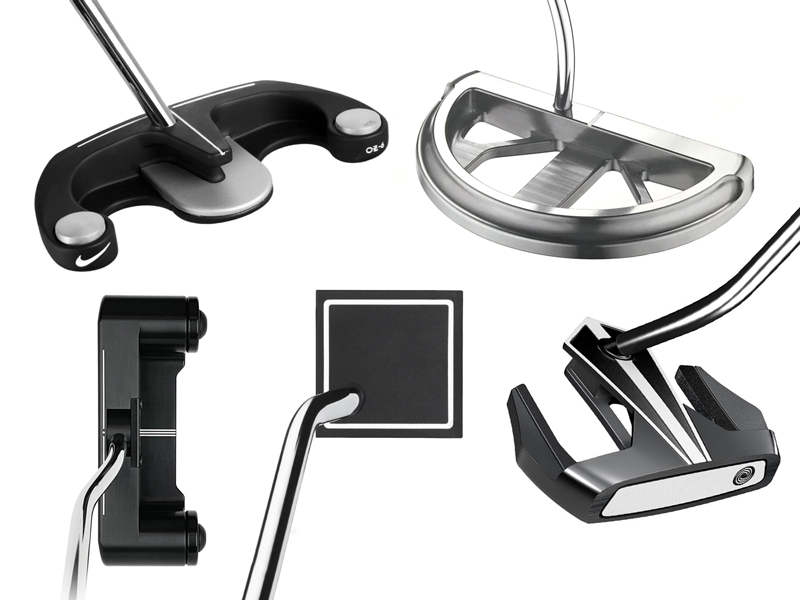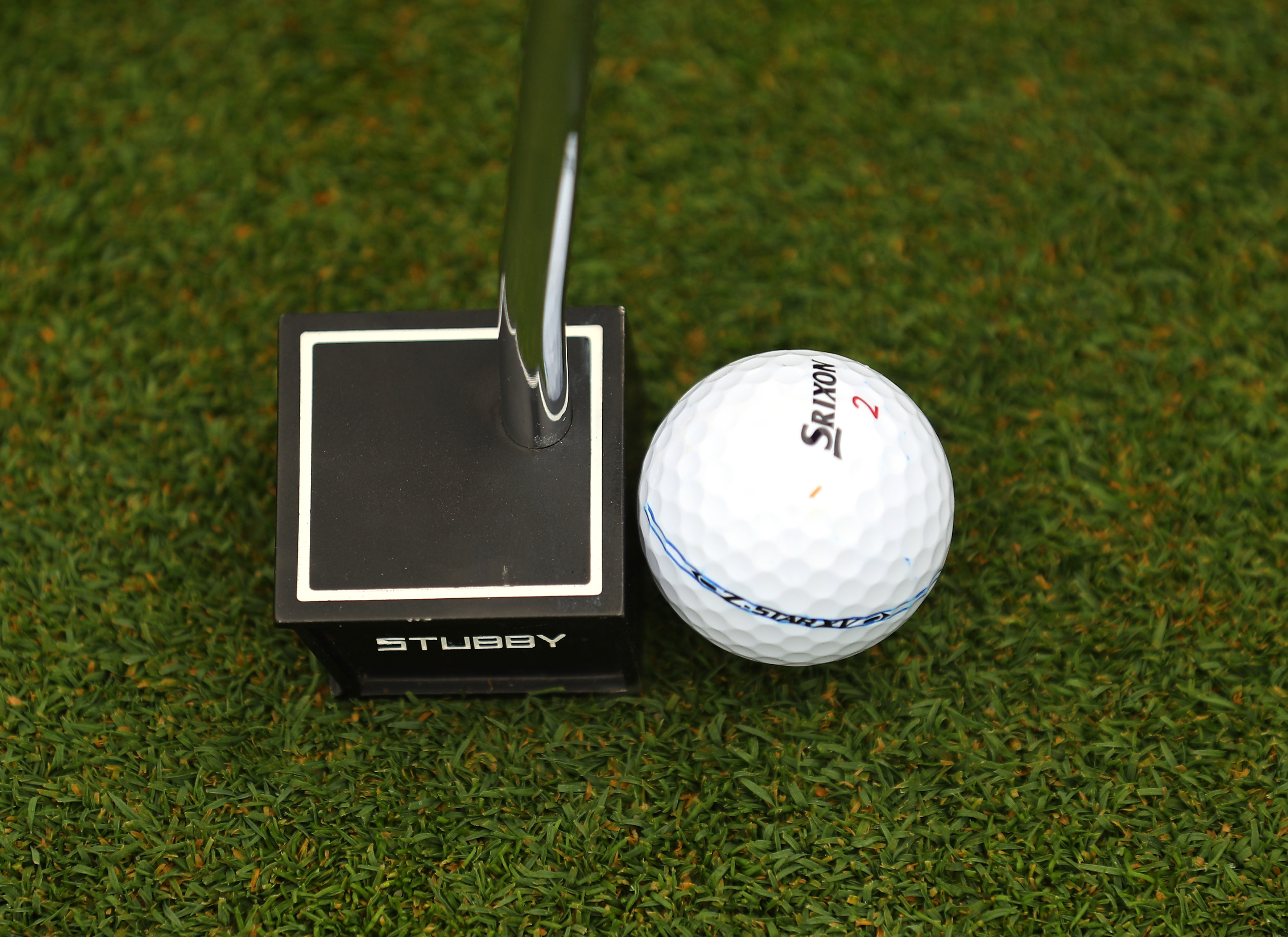
When you’re short of form on the greens, you’ll try anything to get the ball in the hole. Manufacturers understand your pain and are therefore always coming up with new ways to help.
As you can see below, it seems when it comes to putters, anything goes. Now we are not saying that unusual necessarily means bad – we would never want to be seen to be stifling innovation or creativity.
But in the quest for extra performance, perhaps things were taken a step too far in the case of the 12 most unusual putters of all time we’re counting down here. Hold on to your hats...
Ping Doc 17
Originally launched in 2004, the large, semi-circle “udrainium”Doc 17 putter had the highest MOI of any Ping putter at the time. This is no wonder, given it was 15cm in length from heel to toe.
Its stability and forgiveness proved surprisingly popular and Ping brought out different versions later that year, like the mid-length Doc 15B and the centre-shafted Doc 15C. Whilst it may have worked at the time, the oversized concept never really took off and as time passed, manufacturers including Ping figured out ways to build in similar levels of stability into smaller head shapes.
Cleveland Smart Square Stubby

In 2015, Cleveland unveiled the TFI Smart Square putter, featuring two squares that created parallel lines framing the ball at address and easily highlighting when the putter is misaligned.
But then during the Joburg Open in 2017, Jaco van Zyl used a much smaller version called the Smart Square Stubby. Originally launched as a training tool, it had just one square and the face on it was barely wider than a golf ball. Watching him using genuinely made us feel nervous, there's certainly a few golfers out there who would have an airshot with this club!
Nike OZ 6
We know that spreading weight to the perimeter of a putter increases forgiveness. Well Nike took this concept to another level with the launch of the OZ 6 model.
Forming an oversize, reverse number 3 shape, this putter offered great stability, but at the cost of unconventional visuals.
Odyssey Flip face
When you lead the way in the putter market and bring out as many new products as Odyssey do, you’re allowed the occasional own goal.
The Flip Face from 2012 was arguably one of those, comprising a rotating face with two different inserts offering different feels. In theory it saved buying two different putters for different green speeds and conditions, but this was solving a problem that didn't exist. It was also quite expensive at the time, which somewhat negated any cost savings from only buying one putter.
Orion BlackHawk
Matt Every caused a stir on tour in 2012 at the Sony Open when he put a putter in play that seemed to closely resemble a black brick on the end of a shaft.
It was in fact a BlackHawk, a putter that could stand upright on its own, had no loft and a sweetspot that was supposedly three balls wide. He got himself into contention too, so it clearly worked. Sandy Lyle also used the BlackSwan version in more recent years, featuring a cutout semicircle in the rear of the clubhead for alignment aid.
LAB Golf Directed Force
LAB stands for Lie Angle Balanced, a design said to eliminate torque from the putter, giving all golfers the ability to consistently repeat their stroke.
Why the head had to be such an unusual shape, who knows, but there must be something in it given Adam Scott put a similar version in play for a number of weeks.
Axis-1 Eagle
Recent launches from Axis-1 have been more traditional in looks, enabling Justin Rose to use one for a number of seasons to great effect.
But the original models, like the Eagle and Umbra, were fairly divisive. This was down to the patented heel counterweight that placed the centre of gravity right on the centre of the striking face and perfectly aligned with the axis of the shaft.
Scotty Cameron Futura
Scotty Cameron is best known for his pure, traditional blade putters, like the classy Select Newport franchise, but in 2003 a far more unorthodox design was unveiled.
With 75 per cent of the weight being in the stainless “horseshoe” at the rear, the original Futura offered great forgiveness and almost immediate roll. Despite its overbearing visuals, it notched up wins on tour but Futura designs did become less funky in the years that followed.
Bryson DeChambeau Side saddle

Never one to be afraid to think outside the box, the ‘scientist’ Bryson DeChambeau thought he’d come up with a completely new way to hole more putts.
For nearly two months, he adopted the side saddle method, a technique also used by Sam Snead towards the end of his career, where he hit putts standing to the side of the ball, facing the hole.
The USGA though, had other ideas, and deemed his original side saddle putter non-confirming. While a new version was deemed to be compliant, DeChambeau ditched the method after less than a handful of events.
Ice Block
Unquestionably one of the more eye-catching products launched in 2017 was the Ice Block putter.
Made in Switzerland, the transparent material used on the head of the Ice Block putter is supposed to provide more precise alignment.
It also stands up on its own, so you can check the alignment and position your hands in the same place every time.
Odyssey Backstryke
In 2010, Odyssey unveiled a putter where the shaft of the club entered the back of the head to place the axis of the shaft as close as possible to the centre of gravity. This was said to help to produce a more stable stroke and also set the hands in the correct position.
As unusual as it was visually, it gained some traction on tour, most notably with Thomas Bjorn who used one for a while, including during his win at the Qatar Masters.
Cure RX5
Not only does the Cure RX5 putter turn heads because of its shape, but it also intrigues with its adjustability.
Golfers can adjust the weights in the heel and toe that offer extreme forgiveness but also the lie angle, which is a feature unique in the market place.
Even Russell Knox was sold on the benefits for a brief while out on tour and while its shelf life might be limited, the forgiveness will undoubtedly help golfers who often miss-strike their putts.







